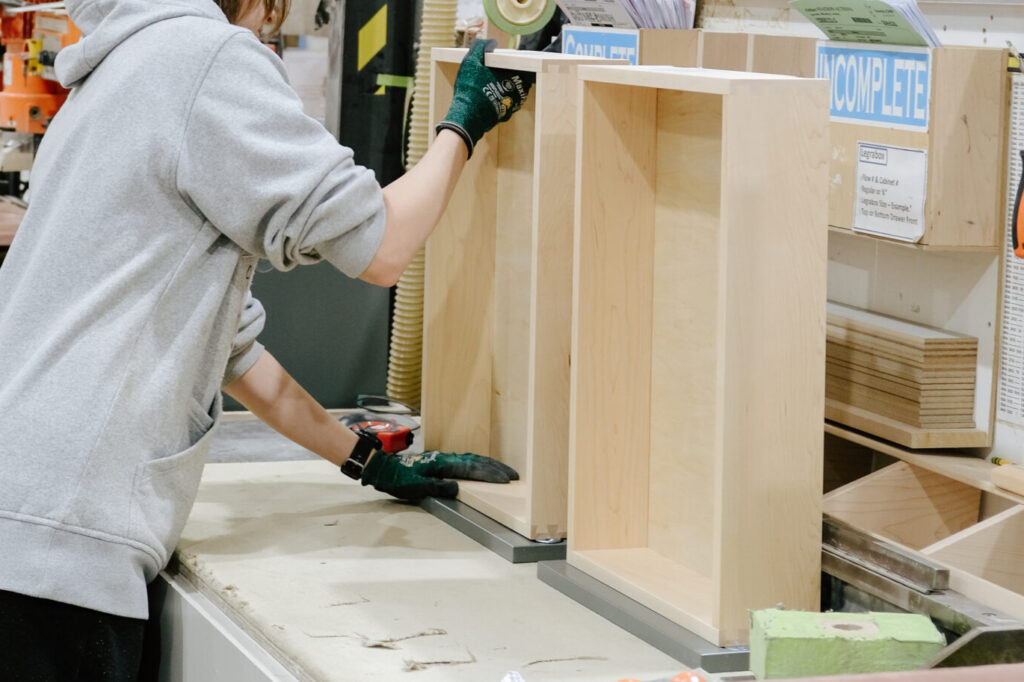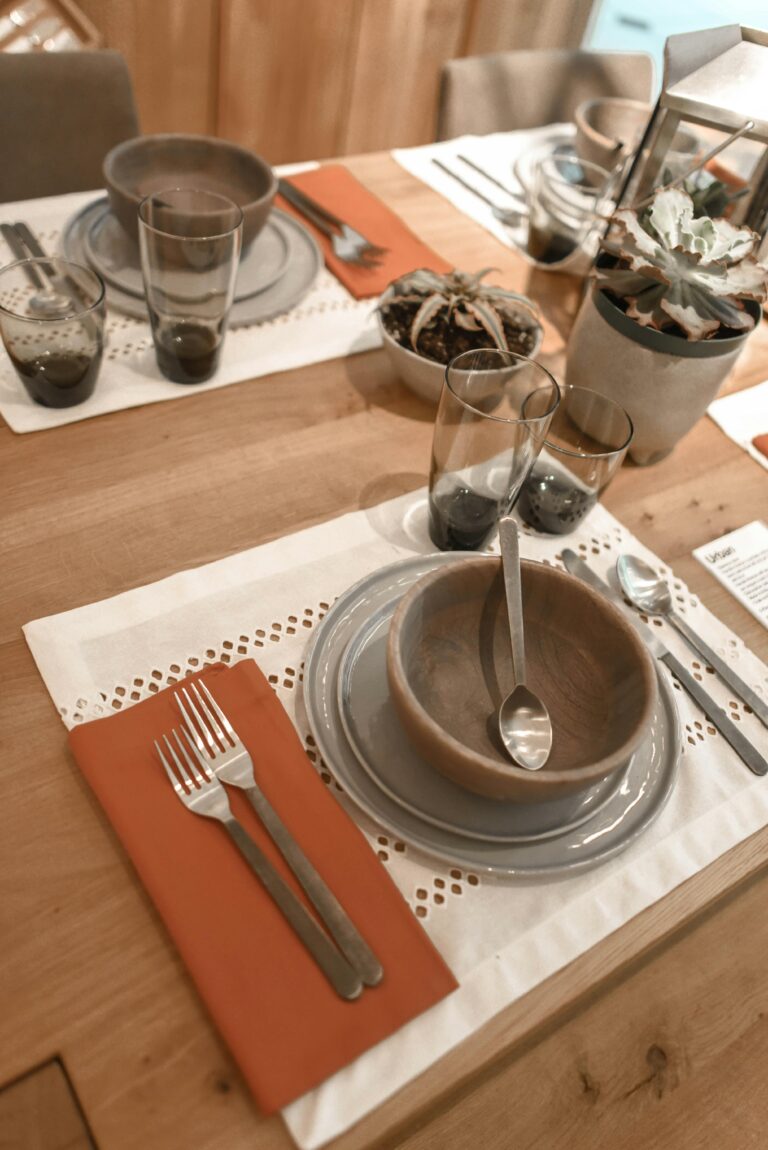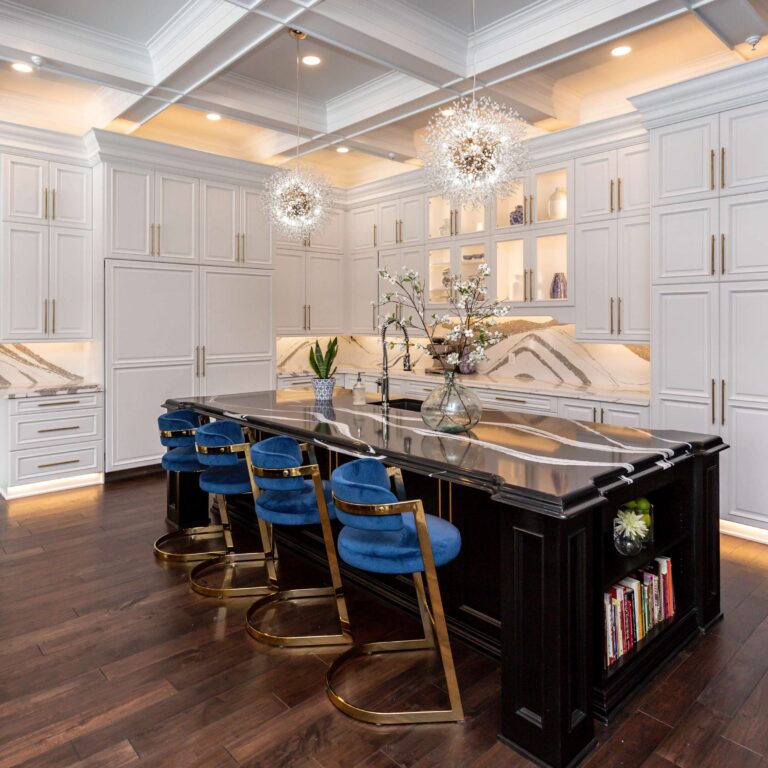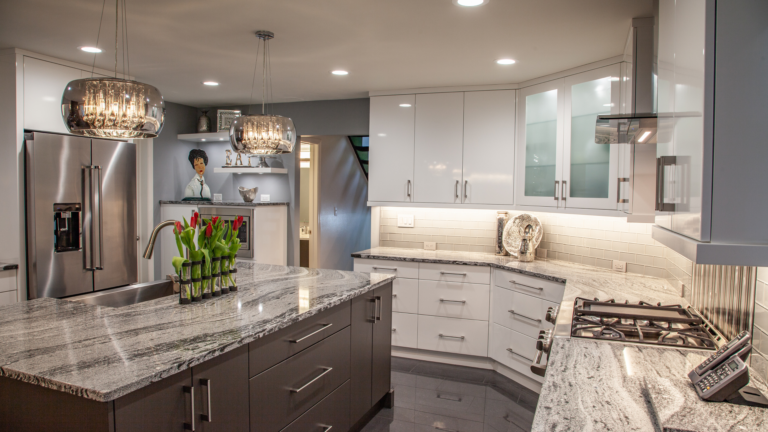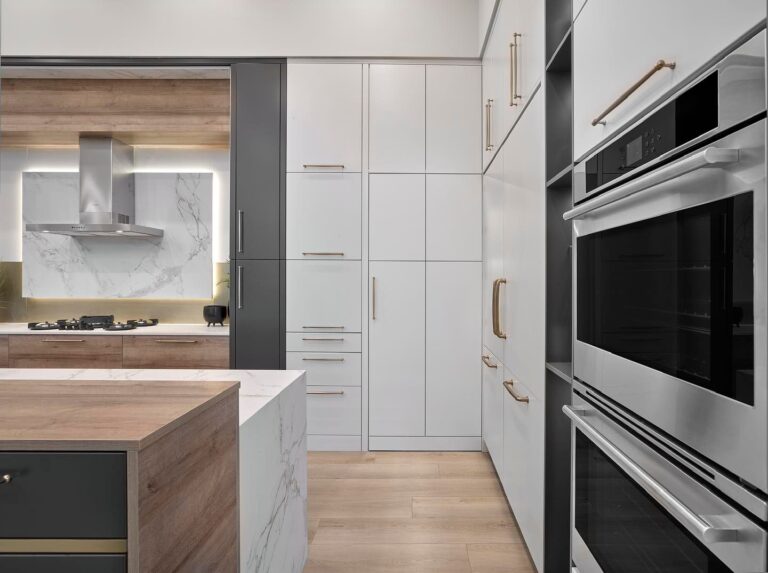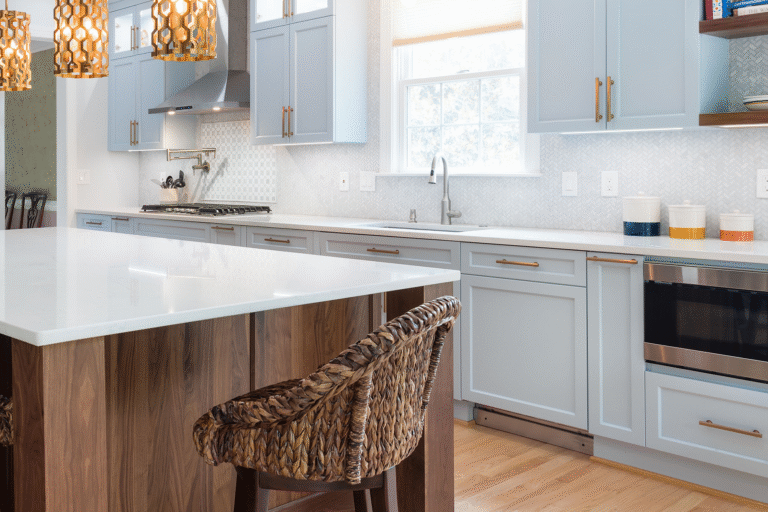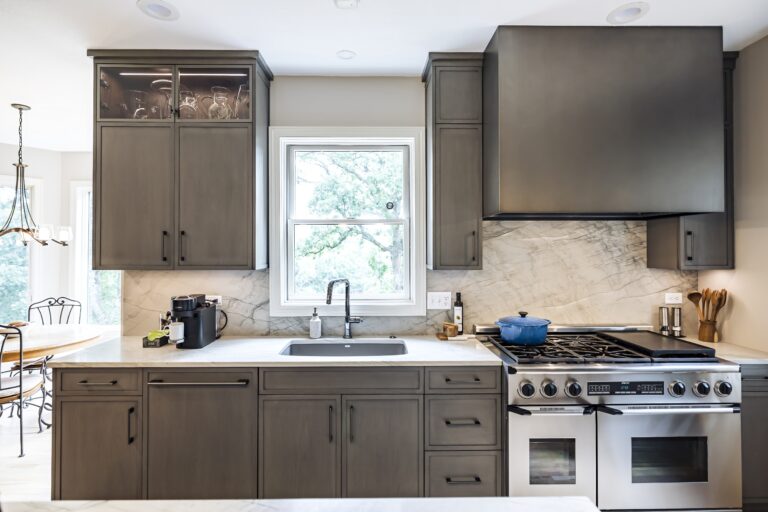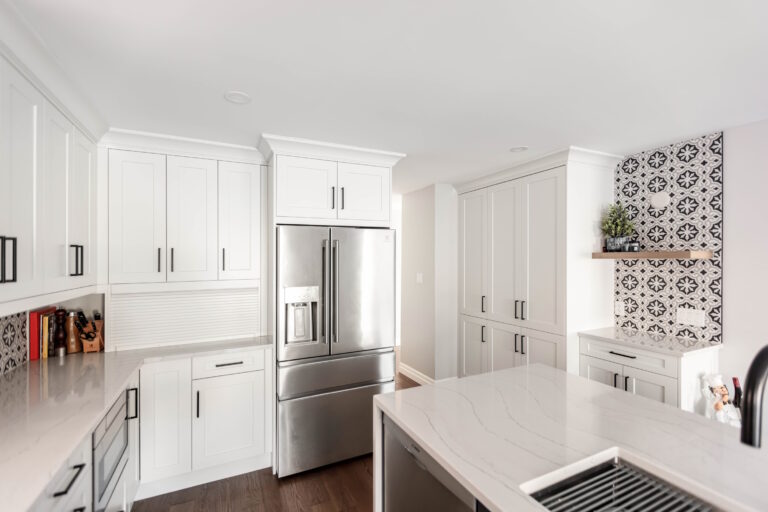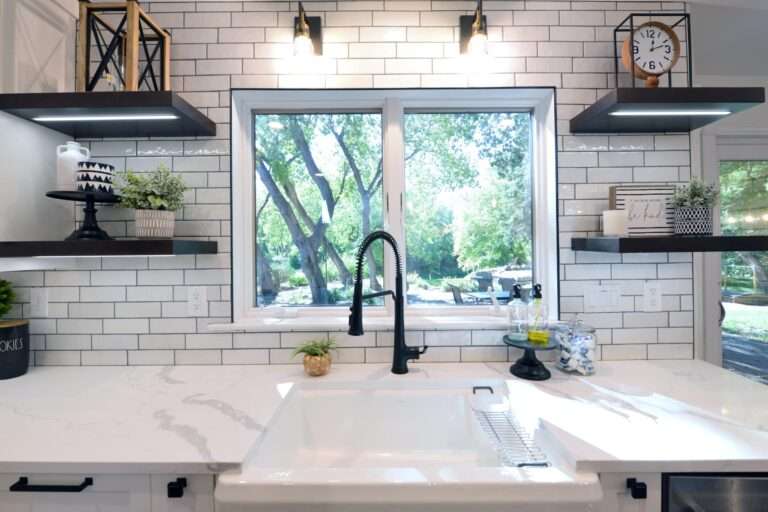Unfinished cabinets might seem like a smart way to save money on your new kitchen, but for most homeowners, there are better choices out there for overall value.
While the price tag is appealing, unfinished cabinets often take more time, effort, and tools than expected. And without professional finishing, the result can fall short in both appearance and durability.
Here’s what you need to know before deciding.
What Are Unfinished Cabinets?
Unfinished cabinets are sold as raw wood—no paint, no stain, no finish coating. They’re designed for you to diy. When you purchase unfinished cabinets, it’s up to you to sand, stain, or paint them yourself.
You’ll usually find them through budget cabinet suppliers or hardware stores. The idea is that you can customize the finish however you want and save on factory labor.
That freedom can sound great on paper, but the process of finishing cabinets correctly is complex, technical, and time-consuming.
Why People Consider Unfinished Cabinets
Cost is the biggest reason. Unfinished cabinets are often priced lower than prefinished or custom options. For experienced DIYers, that savings can be a big draw to purchase.
But when you factor in what it actually takes to prep, paint, and protect raw cabinetry, the real savings tend to shrink quickly.
What It Takes to Finish Cabinets Yourself
Finishing cabinets is not a one-step project. It’s a process that demands time, patience, and the right setup.
You’ll need a space that’s well-ventilated and free of dust so you can apply coatings safely and evenly. Garages, workshops, or spray booths can work if they’re properly equipped. Most homeowners, though, don’t have that kind of setup ready to go.
You’ll also need to handle multiple rounds of sanding, filling, and coating. Many unfinished cabinets don’t arrive perfectly smooth. You may need to fix small dents or fill surface imperfections before you can even begin finishing.
It’s slow work that requires precision. Rushing through it often leads to brush marks, uneven stain absorption, or inconsistent color once installed under bright lighting.
Do You Have the Tools for the Job?
This is the question many people overlook.
To achieve a high-quality finish, you’ll need more than just paint and brushes. Paint sprayers, sanding equipment, sealers, primers, stains, and topcoats all play a role. And using them correctly takes practice.
Professional cabinet facilities use specialized commercial sprayers, filtration systems, and temperature-controlled environments for a reason. It ensures the application of smooth, consistent finishes that hold up over time.
Trying to recreate that at home can be challenging.
What to Expect If You Do It Yourself
Even with care, finishing cabinets yourself usually means:
Setting aside several full days for prep, coating, and drying
Spending on equipment and materials you might not use again
Working in a space that needs proper ventilation and dust control
Dealing with the risk of uneven results or surface damage (especially if you let the cabinets sit for awhile before finishing)
DIY finishing isn’t impossible. But it requires the right ventilation, patience, and experience. Without those, the end result can look patchy or wear out faster than expected.
Why We Don’t Recommend Unfinished Cabinets
At Decor Cabinets, we’ve spent decades refining the finishing process in our own facility. We know firsthand how to create a perfect cabinet finish. Here’s why we don’t recommend unfinished cabinets for most homeowners:
1. The warranty often ends once you apply your own finish.
Many suppliers only guarantee their product as sold. Once you start applying paint or stain, that coverage usually stops. If the finish fails or damages the surface, it’s no longer covered.
2. The finish quality can’t match professional results.
Custom manufacturers use high-end materials and processes designed for long-term wear and consistent color. Home finishing products—no matter how carefully applied—can’t achieve the same durability or protection.
3. Finishing products can react unpredictably with cabinet materials.
Adhesives, veneers, and wood species all respond differently to stains and paints. Without tested compatibility, you risk peeling, blotching, or premature fading.
Common Questions About Unfinished Cabinets
Are unfinished cabinets cheaper?
Yes, initially. When comparing price, make sure you factor in tools, materials, and your time. Additionally, your return on investment in your home may not be the same if your cabinets look “home finished” or start to show wear prematurely.
Can I stain or paint them any color?
You can, but the results depend on the wood species and your technique. Uneven absorption or blotching is common without proper sealing.
The truth is, some wood species accept certain stain colors better than others (which is one of the reasons why Decor Cabinets material and finish availability varies between wood species), so be sure to test your product first before going all in with your choice.
Do I need special tools to finish them?
To achieve a professional quality finish, yes. Sprayers, sanders, sealers, and topcoats are all key to achieving a smooth, durable surface. A paint sprayer is a must have for finishing cabinets. (Editor’s note, I will never paint cabinets with a hand roller and brush ever again!)
Do unfinished cabinets affect resale value?
They can. “Refacing old cabinetry, [is one of the] kitchen upgrades that can provide the highest ROI,” says Sean Cooper, a mortgage broker, in Toronto. (Source)
However, buyers expect a factory-grade finish, and uneven or worn DIY finishes may lower perceived quality. If they see your DIY as a temporary solution, they will factor in a future renovation into their purchase decision.
Better Alternatives to Unfinished Cabinets
If budget is your main reason for considering unfinished cabinets, there are more practical alternatives.
- Semi-custom cabinets offer design flexibility at a reasonable cost, with a factory-quality finish included.
- Prefinished stock cabinets or RTA cabinets provide dependable construction, consistent color, and a smooth finish (without the DIY effort.)
- Modern materials like TFL or UV lacquer give you durable, low-maintenance surfaces in a wide range of colors and textures, all backed by manufacturer warranties.
Each of these options gives you a professional result that lasts longer and looks better from day one.
When Unfinished Cabinets Might Work
Unfinished cabinets can still make sense in a few situations.
They can also be a good option if you have access to a spray booth or know a professional finisher who can handle the process properly.
But for a new kitchen in your main home, the combination of time, cost, and finish risk makes them a difficult choice to recommend.
Our Honest Take
From a professional standpoint, unfinished cabinets rarely deliver the best value for your kitchen. They demand space, tools, and time and if any part of the process goes wrong, the finish can fail long before it should.
Professionally finished cabinets offer stronger protection, better durability, and peace of mind with a warranty. If you’re investing in a new kitchen, it’s worth choosing a product that’s finished to last, right from the start.


